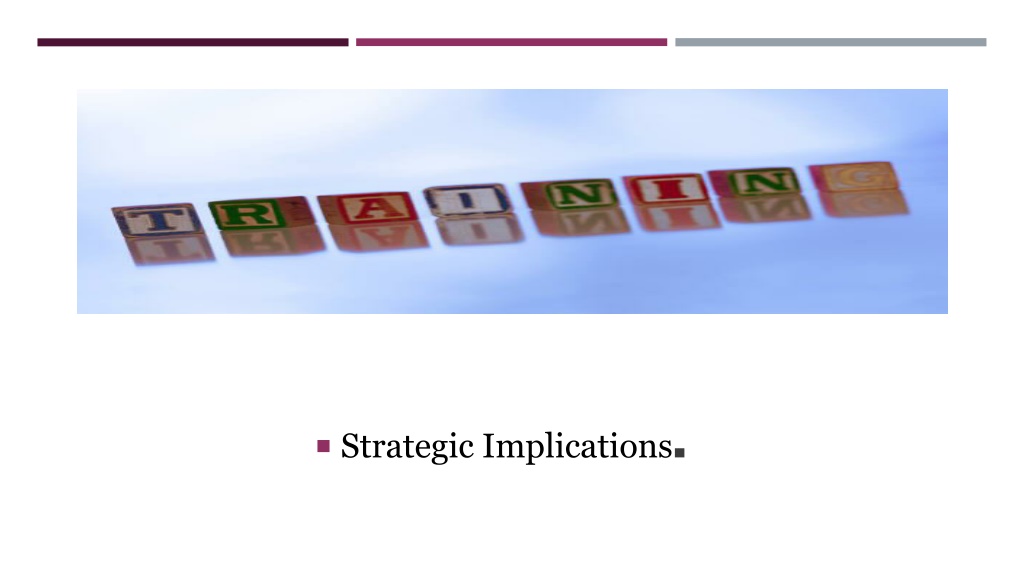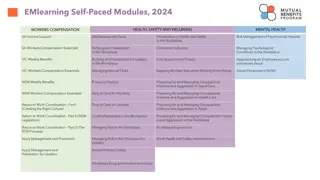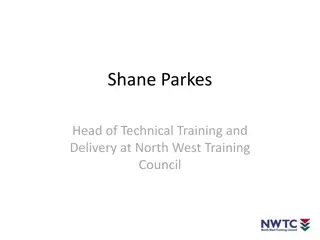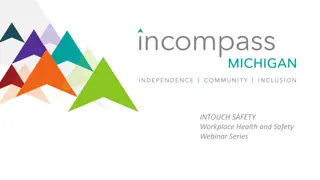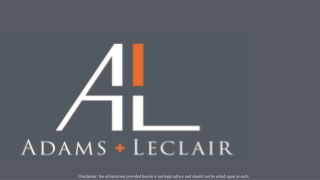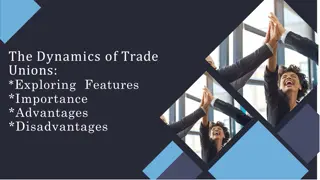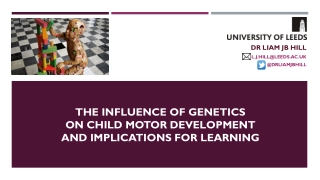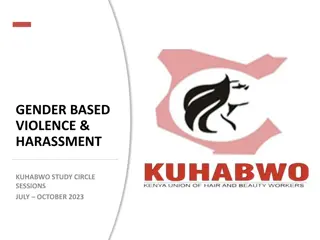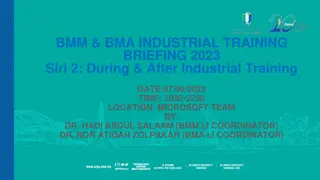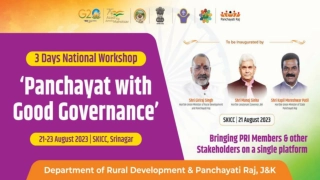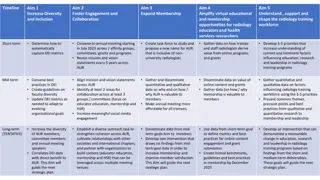Strategic Implications of Training and Development in the Workplace
Enhancing employee performance through training and development is crucial for organizational success. Training focuses on job-related skills, while development aims to prepare employees for future roles. Key inputs include skills, education, ethics, and decision-making. Training programs correct performance deficiencies, leading to improved outcomes and competitive advantage. Strategic issues like technological advancements, organizational restructuring, and globalization shape the training landscape.
Download Presentation
Please find below an Image/Link to download the presentation.
The content on the website is provided AS IS for your information and personal use only. It may not be sold, licensed, or shared on other websites without obtaining consent from the author. Download presentation by click this link. If you encounter any issues during the download, it is possible that the publisher has removed the file from their server.
Presentation Transcript
DEFINITION It may be understood as any attempt to improve current or future employee performance by increasing an employee s ability to perform through learning, usually by changing the employee s aptitude or increasing his/her skills and knowledge
DEFINITIONS Training refers to the process of imparting specific skills Development refers to the learning opportunities designed to help employees grow. Development is an effort to provide employees with the abilities that the organization will require in the future.
INPUTS OF TRAINING & DEVELOPMENT Skills Education Development Ethics Attitudinal changes Decision making & problem solving
SOURCE Training & Development offer competitive advantage to a firm by removing performance deficiencies, making employees stay long, minimising accidents, scrap and damage, and meeting future employee needs
TRAINING A formal training program is an effort by the employer to provide opportunities for the employee to acquire job related knowledge, skills and attitudes and helping them correct deficiencies in their job performance. 1. The systematic process of altering the behavior of employees on the job in a direction that will achieve organization goals. 2.
TRAINING VS DEVELOPMENT Dimensions Training Development Focus Current Job. Current and Future Jobs. Work group or organization. Scope Individual Employee Long Term Immediate Time Frame Prepare for future work demand. Fix current skill deficit Goal
TRAINING : STRATEGIC ISSUES. Rapid change in technology Organization restructuring; Job Design and redesign. Results in increasing rates of skill obsolesce. Increased practices of Job enlargement and enrichment. The scope of responsibility has broadened. (Dejobbing) Mergers and acquisitions Employees are finding it difficult in integrating in different cultures. Loyalty Loyalty towards career not the employer. Globalization Skill deficiency to match the cultural differences and global demands.
THE TRAINING PROCESS Need assessment Phase. - Organization analysis & Support - Task Analysis - Person Analysis Design Phase. - Training objective. -Identify factors needed for facilitate learning. Evaluation Phase -Trainee s Reaction. - Learning. - Transfer of learning. - Results. Development Phase - Drafting and creating training material, audio visual aids, tests and feedback instruments. Implementation Phase -Delivery of training. ( Location, type) - Training of trainers.
NEED ASSESSMENT It diagnoses present problems and future challenges to be met through training & Development It occurs at two levels : Individual & Group An individual obviously needs training when his/her performance falls short of expectations ( KSA) Technology changes fast and new technology demands new skills as it is necessary that the employee be trained to acquire new skills. A group of employees need training when an organization decides to introduce a new line of products, sales personnel and production workers have to be trained to produce, sell and service the new products
DESIGNING & DEVELOPMENT PHASE Who participates in the training programme? Who are the trainees? Immediate supervisors co-workers Members of HR staff Specialists in other parts of the company Outside consultants industry associations Faculty members at universities What should be the level of training?
IMPLEMENTATION PHASE Deciding the location and organizing training & other facilities Scheduling the training programme Conducting the programme Monitoring the progress of trainees
EVALUATION PHASE It must be continuous and specific It provides the means and focus for trainers It is based on the objectives and standards
TRAINING NEED ANALYSIS Organizational Analysis Training Needs Trigger Performanc e Gap Task Analysis Person Analysis Non-Training Needs
TRAINING METHODS. I never teach my pupils. I only attempt to provide the conditions in which they can learn. - Albert Einstein.
ON THE JOB TRAINING It is conducted at the work site and in the context of the job. It is, many times, informal An experienced worker shows a trainee how to work on the job
TRAINING ON THE JOB The employee is placed into real work situations and shown the jobs and the tricks of the trade by an experienced employee or the supervisor. 1. Coaching or Understudy. 2. Job Rotation. 3. Special assignments. 4. Apprenticeship/Internship Training. 5. Job Instruction Training. 6. Syndicate method. (working in small groups)
TRAINING OFF THE JOB Simulation methods : 1. Case study. 2. Role Playing. 3. In basket Technique. 4. Management games. Knowledge based methods . 1. Lectures, seminars, workshops, Group discussions. 2. Educational training program at academic institutes.
CONT Computer based training programs. 1.Virtual Reality. Distance and Internet based training. Sensitivity Training./ T-group training. Outbound Training Programs.
SENSITIVITY TRAINING Small number of trainees, usually fewer than 12 in a group The objective is to provide the participants with increased awareness of their own behaviour and how others perceive them greater sensitivity to the behaviour of others, and increased understanding of group processes
MANAGEMENT DEVELOPMENT All developmental efforts that focus on managers and supervisors to make them better leaders Long term goal Development helps broaden an individual s vision and provide a longer term view of the individual s role in the organization
MDPS On the job methods off the job methods Job rotation Seminars and conferences Coaching Case studies Action learning Games Staff meetings Role play Lateral transfer Behavioural Modelling Corporate Universities
CAREER DEVELOPMENT Career is a progress of general course of action of a person in some profession or in an organization Career includes the specific job the person performs, the kind of responsibilities and activities that comprise those jobs, movement and transitions between jobs, and the individual s overall assessment of and feelings of satisfaction Career Planning is a process whereby an individual sets career goals and identifies the means to achieve them
CAREER DEVELOPMENT INITIATIVES Career Planning Workshops Career Counselling Mentoring ( coaching, advising, encouraging ) Sabbaticals ( temporary leaves of absence ) Personal Development Plans Career workbooks
